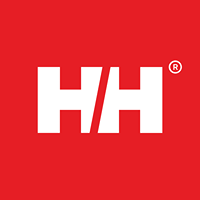Helly Hansen
0 reviews
- Listed in David Jones
- 86-108 Castlereagh Street, Sydney, 2000
- 92665544
- https://www.hellyhansen.com/
Helly Hansen is a Norwegian producer of textiles and gear for sports and work on the ocean and in the mountains, headquartered in Oslo, Norway. From its founding in 1877 until October 2009, the company was headquartered in Moss, Norway.Helly Juell Hansen had been at sea since the age of 14 and in 1877, at the age of 35, he and his wife Maren Margarethe began producing oilskin jackets, trousers, sou’westers and tarpaulins, made from coarse linen soaked in linseed oil. Over the first five years they sold around 10,000 pieces.
In 1878 the company won a diploma for excellence at the Paris Expo, and began exporting its products.
After Helly Juell Hansen’s death in 1914, company leadership passed on to his son Helly Hansen, an experienced merchant.
In the 1920s a new fabric, which Helly Hansen called Linox, was developed. Over the next 30 years the name Linox would transfer to a PVC (polyvinyl chloride) application.
A change for the brand came in 1949 when Helox was developed. The sheet of translucent PVC plastic sewn into waterproof coats and hats became a popular item. About 30,000 Helox coats were produced each month. Plarex, a heavier-duty version of Helox, backed by fabric, was developed for workwear.
A product developed for the outdoor and workwear markets was Fibrepile which is an insulation layer for wearing under waterproofs. It was used by Swedish lumbermen, who discovered that it offered insulation against the cold, and ventilated well during hard, physical work in the forest.
The layering story was completed in the 1970s, with the development of LIFA. The polypropylene fibre used in LIFA kept the skin dry and warm by pushing moisture away from the body, making it the ideal base-layer fabric for outdoor and workwear use. It was the birth of the 3-layer systems of dress with LIFA close to the body, Fibrepile as an insulation layer, and rainwear for protection.
During the 1970s the company developed survival suits for offshore oil workers in the North Sea. In 1980 the company’s breathable, waterproof fabric system, called Helly Tech, was launched. Helly Tech garments use both hydrophilic and microporous technology. Hydrophilic garments have water-loving molecular chains which pass water vapor to the outside. Microporous garments have tiny pores that allow water vapor to pass out of the fabric without letting rain droplets in.
Helly Hansen clothing developed a following among urban youth in the late 1990s, particularly in North England and with the hip hop culture in the US.[2] The brand developed a mass appeal and is now sold in sports shops, not only the hiking and specialized clothing shops of before.
In 2012, Helly Hansen introduced their H2 Flow Technology with the H2 Flow Jacket. The H2 Flow Jacket allows the wearer to regulate their body temperature.In February 2011, a three-year partnership with guiding company Mountain Madness was announced. The agreement between the companies means that Helly Hansen will be outfitting all of Mountain Madness operations guides “with technical apparel from head to toe” beginning the 2011 season and extending through 2013.[5]
In November 2012, Helly Hansen partnered with the US Ski and Snowboard Association to be their official baselayer provider.[6] The US Alpine Ski Team wore Helly Hansen baselayer while competing in Sochi.
Helly Hansen is the official apparel sponsor of the NOOD Regatta Races for sailing.
In July 2015, Helly Hansen became the apparel partner for Canada’s alpine and para-alpine ski teams.


